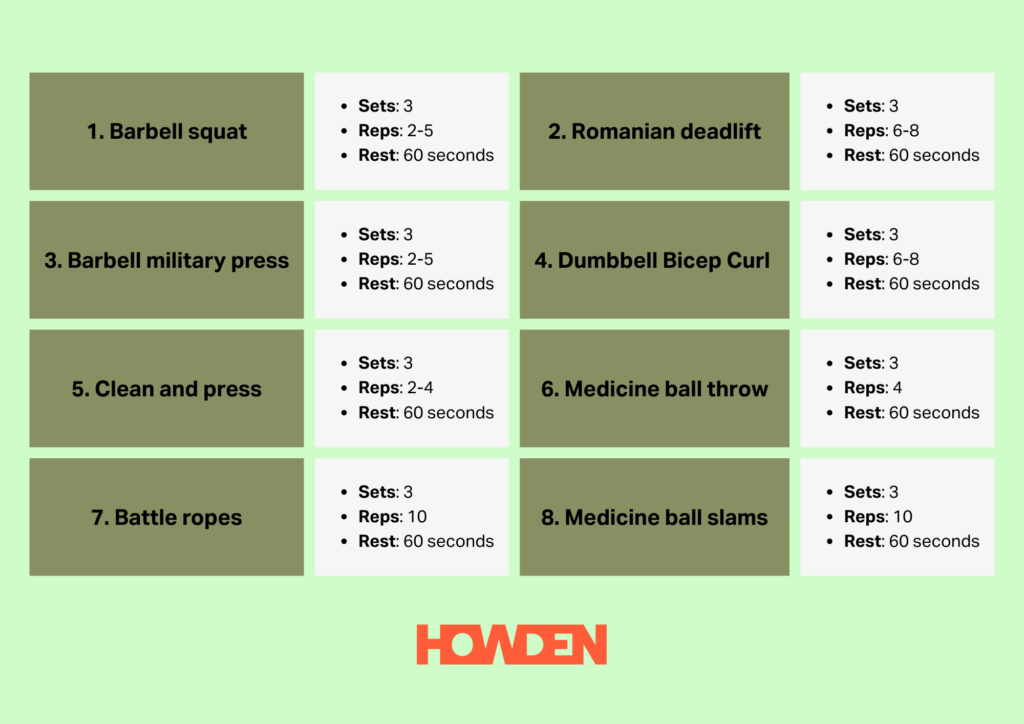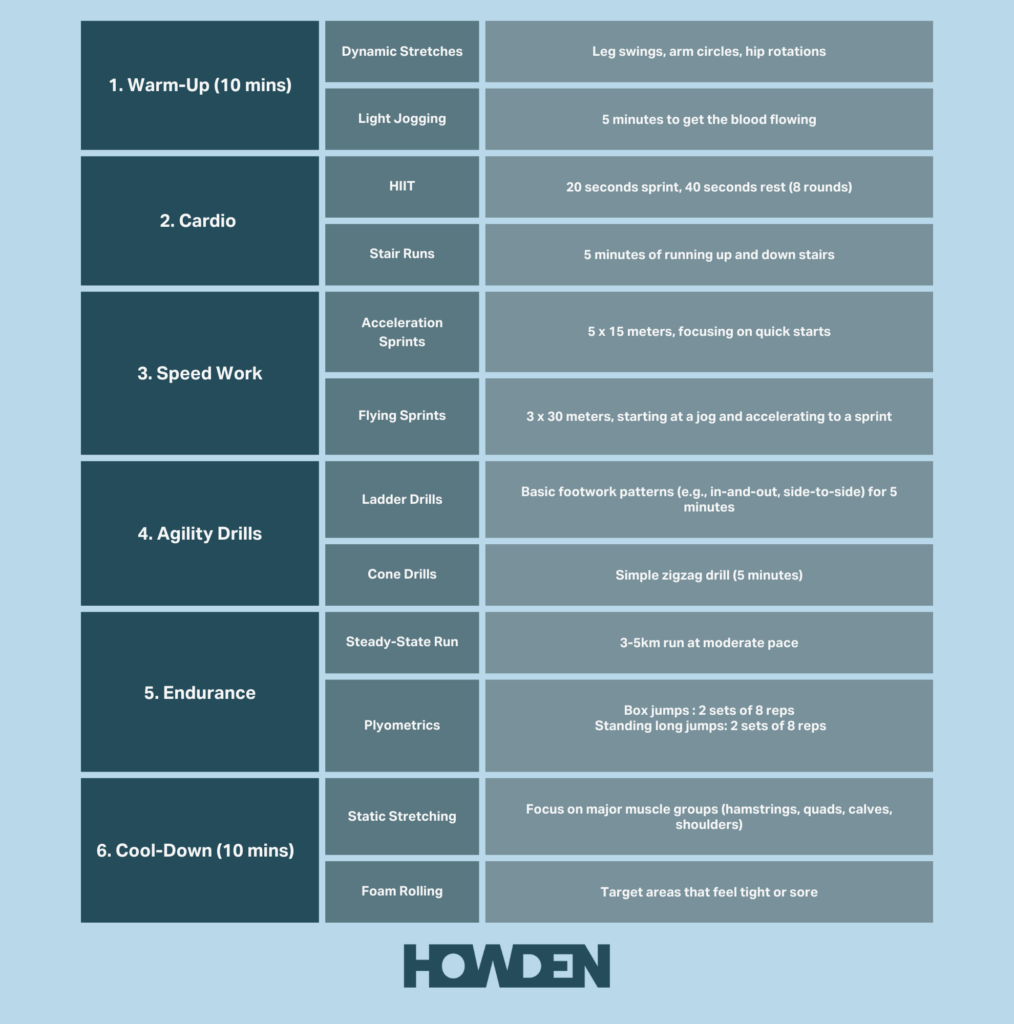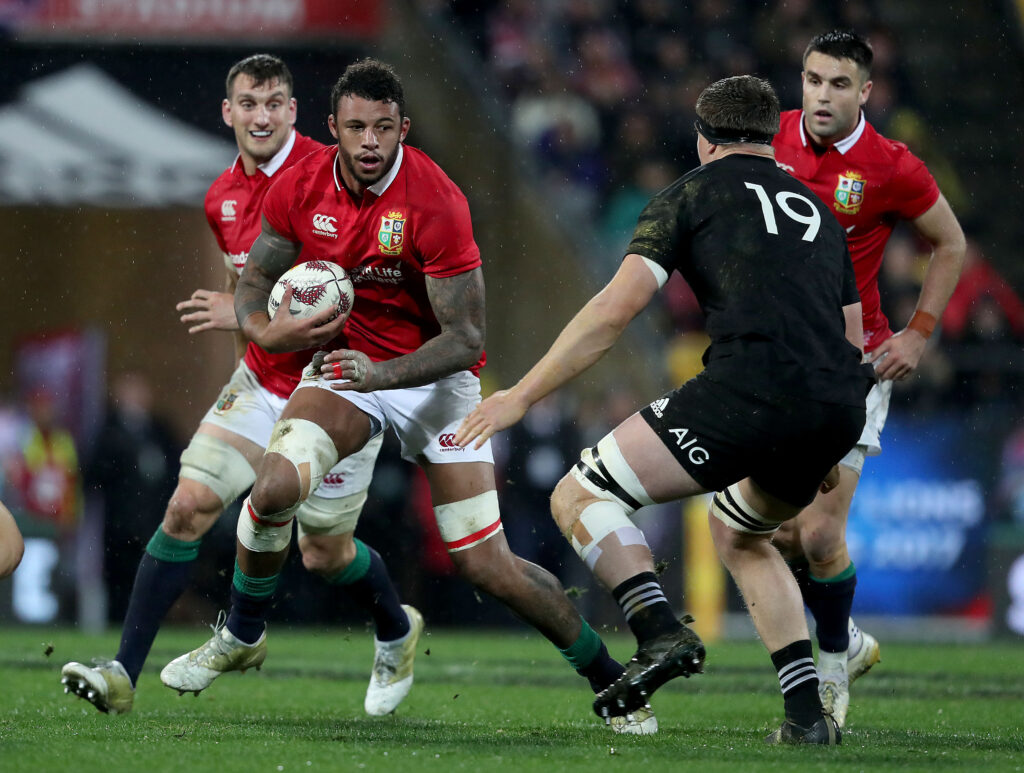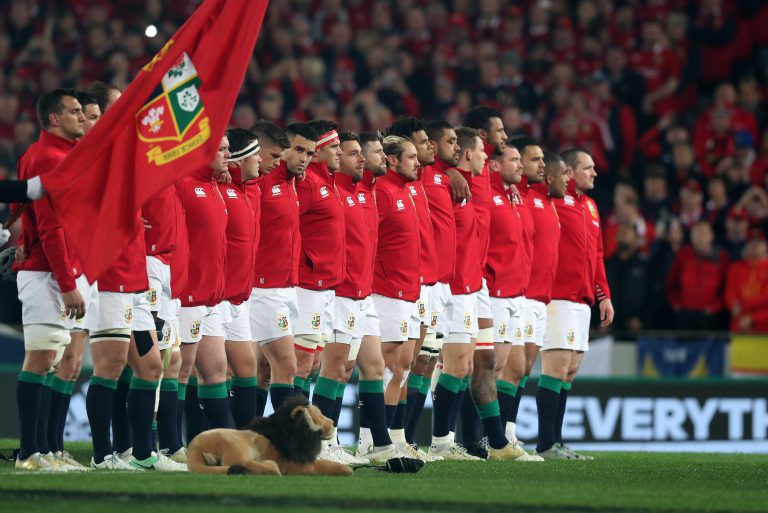As anticipation builds for The British & Irish Lions squad announcement, the team will no doubt be in full training mode. But how do you train like a lion?
Here, we’ve compiled three Lions’ inspired workouts that you can try at home or in the gym, as well as top diet and recovery tips from the players themselves!
Train like a forward: strength & power workout
If you’re looking to improve pure strength and power endurance, then former Lion James Haskell has just the workout for you. According to Men’s Health magazine, Haskell recommends doing this full-body workout twice a week for a month to build visible, athletic muscle and maximise ‘smart strength’.

Find the full workout page on the Men’s Health website here.
Train like a back: high-intensity cardio and speed workout
Perhaps instead you want to focus on your speed, agility and power, and be prepared in case you have to face a much larger opponent on the pitch. For the Lions’ fly-half, Marcus Smith, it’s all about power and agility over bulk. According to an article by the Telegraph, Smith uses high-intensity sprint training and plyometrics among other things to continually out-pace his opponents on the pitch.
Smith has also been known to work with Olympic decathlete Daley Thompson to improve his top-end sprinting speed and maintain acceleration over longer distances. Below, we’ve put together a fitness routine inspired by Smith.

All-round ‘strong-man’ workout
This brutal training method was used by fitness coach and personal trainer Andrew Tracey to prepare the England Rugby team for the World Cup, and revolves around heavy loaded carries – essentially carrying around awkward and heavy objects in quick succession. Sounds fun, right?
According to Men’s Health, heavy loaded carries offer ‘the perfect hybrid of strength and cardio training’, because, ‘moving heavy things over long distances quickly provides you with all the benefits of both worlds – perfect for an elite rugby player.’
And if you want to go one step further, to really maximise your gains, it’s recommended to use heavy odd-objects with irregular weight distribution, like sandbags or kegs, rather than traditional weights (such as dumbbells or kettlebells).
Not only are they awkward to manoeuvre, but their contents are also moving around inside, meaning you have to constantly readjust your grip as you carry them. In the process, many more muscles are used in lifting and carrying. Why not have a look and see what you can use around the house!
For reference, England players used 70kg sandbags, 50kg kegs, and for farmer’s carries (holding a heavy weight in each hand and walking a set distance) they carried their own weight in each hand. We would advise you to start somewhere slightly more realistic, to avoid breaking your back!
The workout
As fast as you can, aim to complete five rounds of the following exercises, giving yourself a three-minute rest between rounds:
- Left hand suitcase carry – grab a dumbbell or kettlebell (as heavy as you can manage), letting it hang naturally by your side. Breathe in, engaging your core, and walk briskly while clenching the opposite hand to create tension. At the 20-meter mark, place the weight down safely and quickly.
- Sprint back to the start line (20m).
- Sandbag bear hug carry (20m)– Squat down with a flat back, roll your hands under the bag, lift it to your lap, and wrap your arms tightly around it. Stand tall, keeping the bag secure, and take short, strong strides while staying upright and focused. Move quickly to complete the distance before placing the bag down.
- Sprint back to the start line (20m).
- Right hand suitcase carry – repeat the same as step 1, this time with the weight in your right hand.
- Sandbag bear hug carry (20m)
- Sprint back to dumbbells (20m)
- Farmer’s carry (20m) – this time, combine steps 1 and 5, with weights in both hands, and sprint back to the start line as fast as possible.
- Rest & repeat!
Rugby diet tips

What you eat between training is just as important as the exercise you are doing. And for the Lions, that’s a whopping 3,750 calories on average per day – around 50% more than the recommended daily intake for a man. So, what should you be eating if you want to keep up with the Lions?
Protein
An obvious one, but absolutely essential for muscle repair and growth. It is a foundational part of the Lions’ diet. According to Canterbury, the Lions avoid processed food like white rice or white pasta, and get their protein from low-fat sources like chicken, fish, beans and lentils.
Carbohydrates
Unlike endurance sports, rugby demands explosive power, making carbs essential for energy. However, the breakdown of carbs varies, influenced by genetics and the speed at which glucose converts to energy.
Prioritise complex carbs like brown rice, wholegrains, oats, fruits, and vegetables about three hours before training. Their fibre content ensures a gradual energy release and slows the entry of sugars into the bloodstream.
Fruit
Fruit is a great food source for both pre-game and recovery. Bananas, rich in starch and magnesium, are excellent pre-workout foods, offering quick energy boosts. Or even better, make a banana smoothie. Cherries are another excellent choice, especially for athletes, due to their anti-inflammatory and antioxidant properties, which help reduce exercise-induced muscle pain and inflammation.
Lastly… sugar!
Of course, it’s a treat – but also a great source of short-term fuel – so a quick sugary snack is never a bad thing when it comes to exercise.
How do players recover after training?
It’s a well known fact that rugby players are no strangers to ice baths; they have many benefits for athletes, such as reducing muscle soreness, preventing inflammation, accelerating recovery and improving circulation. And you don’t need all the fancy equipment to do it yourself – just run a cold bath at home, throw some ice in and you’re good to go!
Other than a cold plunge, the Lions employ a whole team of recovery experts, including masseuses and physios. Outside of professional support, the players also regularly use saunas and go swimming to promote cardiovascular health and muscle relaxation.
Our clients wellbeing is really important to us. If you’re as big a fan of the Lions as we are, you may find that a rugby-style routine works well for you – it’s all about coming up with new ways to keep you fit and healthy! Did you know that Howden also offers health and life insurance? Contact your local branch to find out more!
Get involved in the excitement at Howden!
There’s set to be many more memorable moments this summer as The British & Irish Lions take on Australia, so why not join in the fun with your local Howden branch? We’re working with clubs across the country to celebrate, so check out what your branch is up to here.
Sources: Men’s Health, Canterbury, GQ, The Telegraph
You could also read:
- AirTags – a car thief’s worst nightmare?
- Five hidden costs that could derail your holiday!
- April cost crunch: 7 bills you’ll pay more for
- Car insurance prices drop 23% for young drivers!
- The most iconic on-screen number plates
This is a marketing blog by Howden Insurance.

